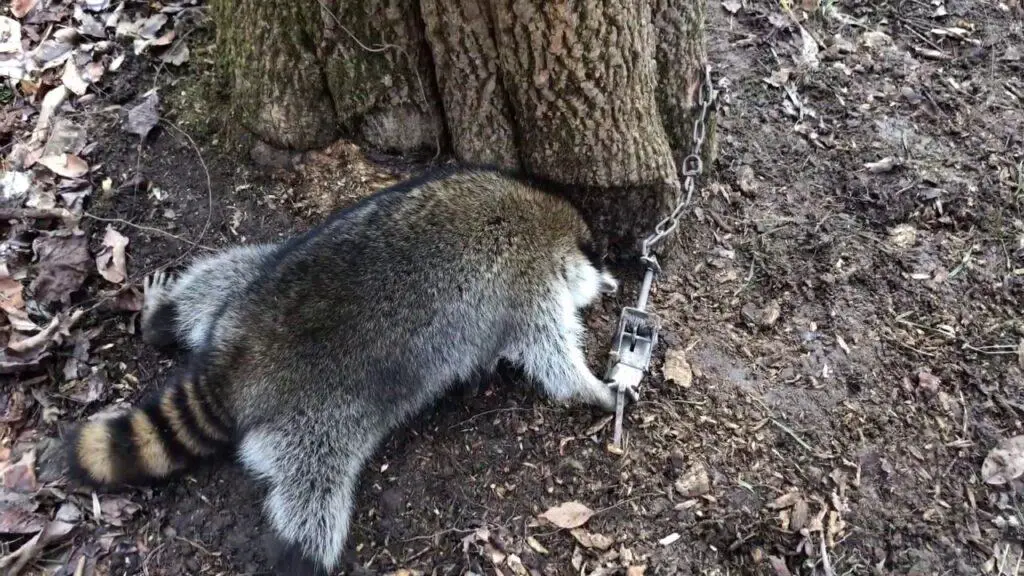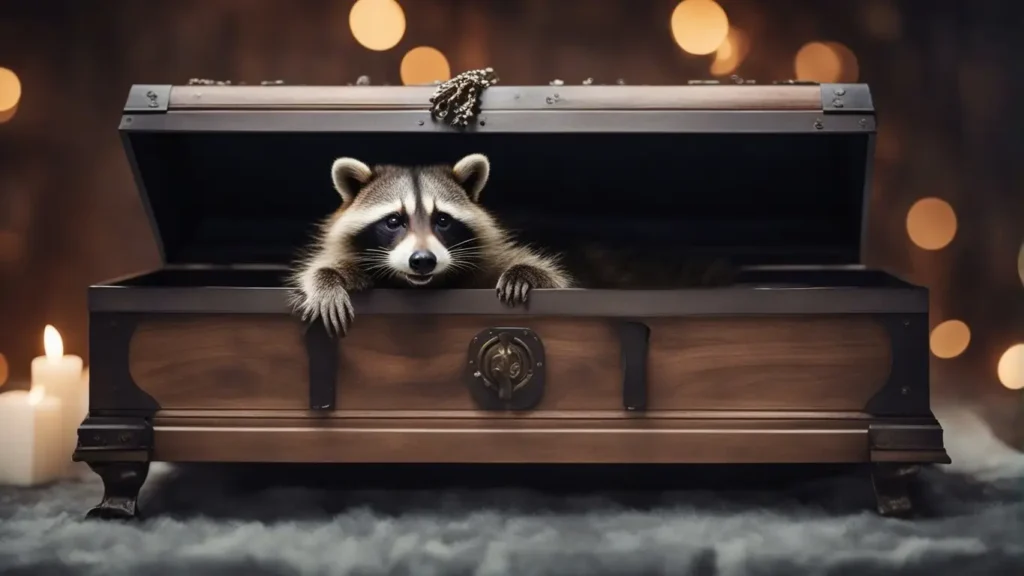In the realm of dead raccoon disposal, efficiency and safety are paramount concerns.
This article will swiftly guide you through the two most efficient and responsible methods to address this situation.
Let’s begin!
How to Deal with a Dead Raccoon

The most efficient means of disposing of a deceased raccoon entail either burying the carcass or employing standard trash disposal services. Let’s delve into their respective processes.
Burial
This is the oldest and most common method of disposal. The carcass should be wrapped in a plastic bag, placed in a box, and buried underground.
When selecting a burial site, make sure there are no nearby underground water sources or areas that may flood to reduce the chance of water contamination. Another factor to consider is the type of soil; make sure the ground does not contain too much sand. Burial is difficult in the winter in colder climates.
Licensed Pickup Services
Licensed Pickup Services for dead raccoon disposal are an indispensable cornerstone in the meticulous management of deceased wildlife within residential and public domains.
These services stand as sentinels of safety, efficiency, and environmental stewardship. These services serve as a crucial bridge between the community and responsible disposal practices. Their contributions extend far beyond the simple removal of deceased raccoons.
It is crucial to emphasize the potential hazards associated with handling deceased animals, particularly when there is a risk of disease transmission. When dealing with deceased animals, it is imperative to take precautions such as wearing protective clothing and gloves to minimize exposure.
In cases where contact is made without gloves, it is essential to wash hands thoroughly with soap or detergent to mitigate any potential risks.
Additionally, if there are any indications of zoonotic diseases like rabies, immediate notification of local animal health authorities is imperative. Furthermore, the affected area should be thoroughly cleaned using a chemical disinfectant to prevent the further spread of the infection.
When it comes to the proper disposal of deceased animals, it is important to consider utilizing licensed collectors for pickup services. These licensed professionals can ensure the safe and appropriate transportation of deceased animals to designated landfills, adhering to established guidelines and regulations.
For more information you can consult our full guide on ‘How to get rid of Raccoons.’
Pros and Cons of Burying a Dead Raccoon
Burying a dead raccoon can be a viable disposal option in certain situations, but it also comes with its own set of pros and cons:
Pros:
- Containment: Burying a dead raccoon helps contain the remains, preventing scavengers and other animals from coming into contact with it and potentially spreading diseases.
- Eco-Friendly: It can be considered a more environmentally friendly option compared to other methods like incineration or landfill disposal, as it allows for natural decomposition.
- Cost-Effective: Burying a dead raccoon can be cost-effective since it doesn’t require professional pickup services, which may involve fees.
- Privacy: It provides a discreet option for disposing of the remains without relying on external services.
Cons:
- Potential Contamination: Burying a dead raccoon carries the risk of soil and groundwater contamination, especially if not done properly. There’s a risk that pathogens or contaminants from the carcass could leach into the ground.
- Digging Effort: Digging a sufficiently deep hole can be physically demanding, and it may not be feasible for everyone, depending on the soil type and location.
- Regulations: Local regulations and laws may prohibit or restrict the burial of dead animals. Violating these regulations can result in legal consequences.
- Odor and Attraction: Burying a raccoon may not completely eliminate odor and attraction to scavengers. Proper burial depth and covering with soil or other materials are essential to mitigate this risk.
- Limited Decomposition: In some cases, it may take an extended period for a raccoon to fully decompose when buried, depending on factors like soil conditions and depth.
How to Dispose of a Dead Raccoon without a Backyard to Bury It In
If you don’t have a backyard to bury a dead raccoon, there are still a few options for disposal:
- Contact a professional: If you are uncomfortable handling the dead raccoon or are unsure of how to dispose of it, you can contact a wildlife control professional. They will have the necessary equipment and expertise to safely remove and dispose of the carcass.
- Disposal by trash: After placing the dead raccoon in a secure bag, you can dispose of it in the trash. However, it is important to check with your local waste management facility to ensure that this is allowed in your area.
- Incineration or rendering: If you have access to specialized equipment and permits, you can consider incinerating or rendering the carcass. However, these methods are not practical for most people.
Regardless of the method of disposal, it is important to handle the dead raccoon with caution and wear protective clothing and gloves.
If there are signs of zoonotic disease like rabies, local animal health officials should be informed immediately, and the location should be cleaned with chemical disinfectant to prevent the infection from spreading further

Are There Any Laws or Regulations Regarding Dead Raccoon Disposal
Laws and regulations regarding the disposal of dead raccoons, or any dead wildlife, can vary significantly depending on your location and jurisdiction. Here are some general points to consider:
- Wildlife Regulations: Many countries and regions have specific regulations governing the disposal of dead wildlife, including raccoons. These regulations are often in place to prevent the spread of diseases and protect public health. They may dictate how dead wildlife should be handled, transported, and disposed of.
- Local Ordinances: In addition to national or regional regulations, local municipalities or counties may have their own ordinances related to dead animal disposal. These ordinances can vary widely and may specify methods for disposal or restrictions on burial.
- Permits: In some cases, you may need permits or authorization to legally dispose of a dead raccoon, especially if it’s considered a protected or endangered species.
- Health and Environmental Laws: Depending on the location and circumstances, health and environmental laws may also apply. These laws can address issues such as disease control, groundwater protection, and soil contamination.
- Professional Services: Some areas require the use of licensed professionals, such as animal control officers or wildlife removal experts, to handle and dispose of dead raccoons and other wildlife.
To ensure compliance with relevant laws and regulations, it’s advisable to contact your local animal control authorities, wildlife agencies, or environmental agencies for guidance on the proper disposal of a dead raccoon in your specific area.
They can provide information on any permits needed, acceptable disposal methods, and any restrictions or guidelines you should follow. Violating these regulations can lead to legal consequences, so it’s important to seek guidance and adhere to local laws when dealing with dead wildlife.

